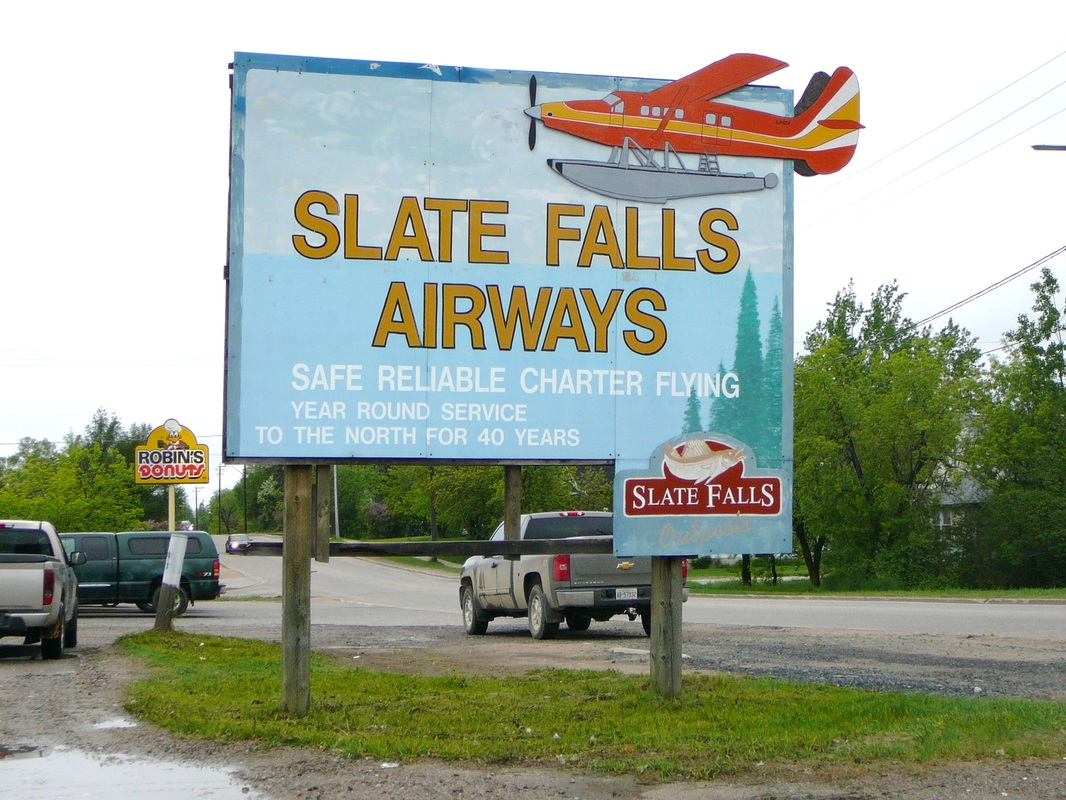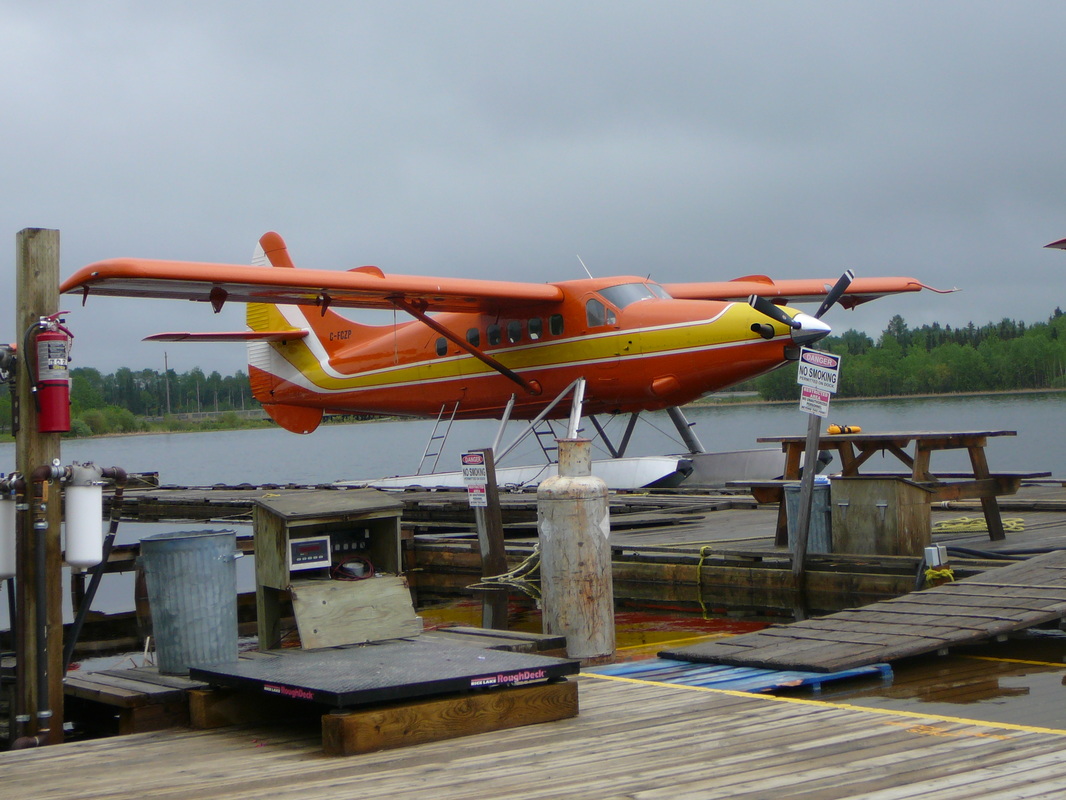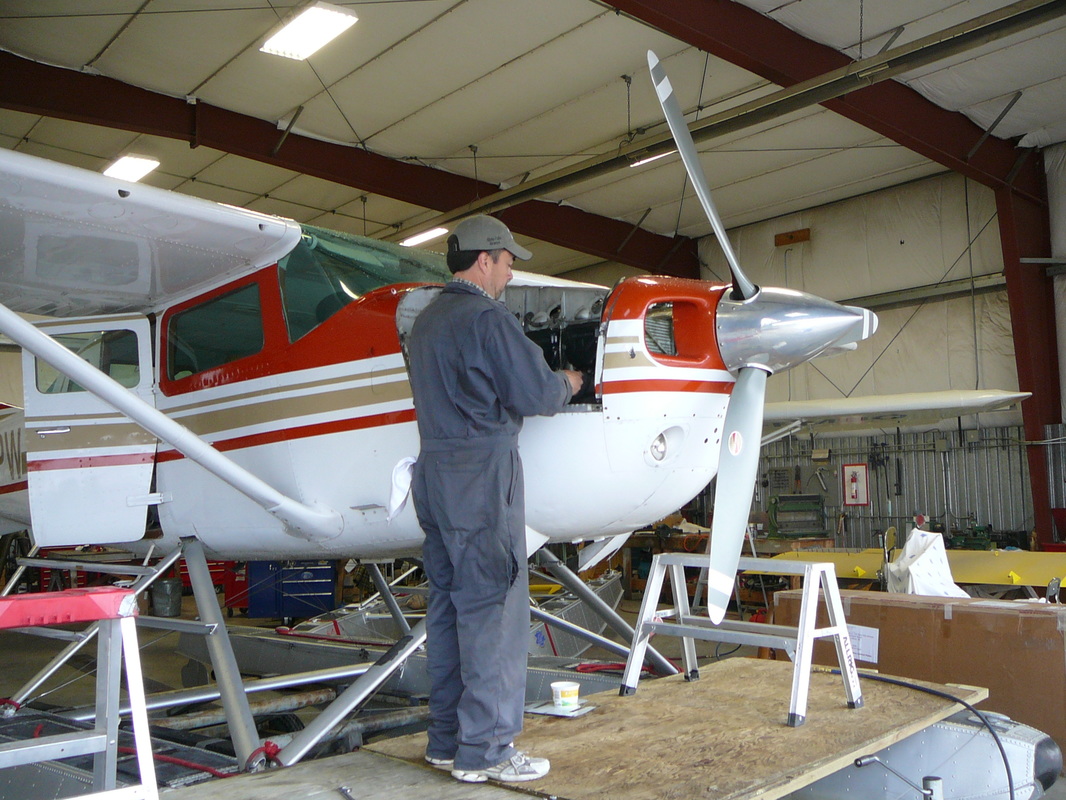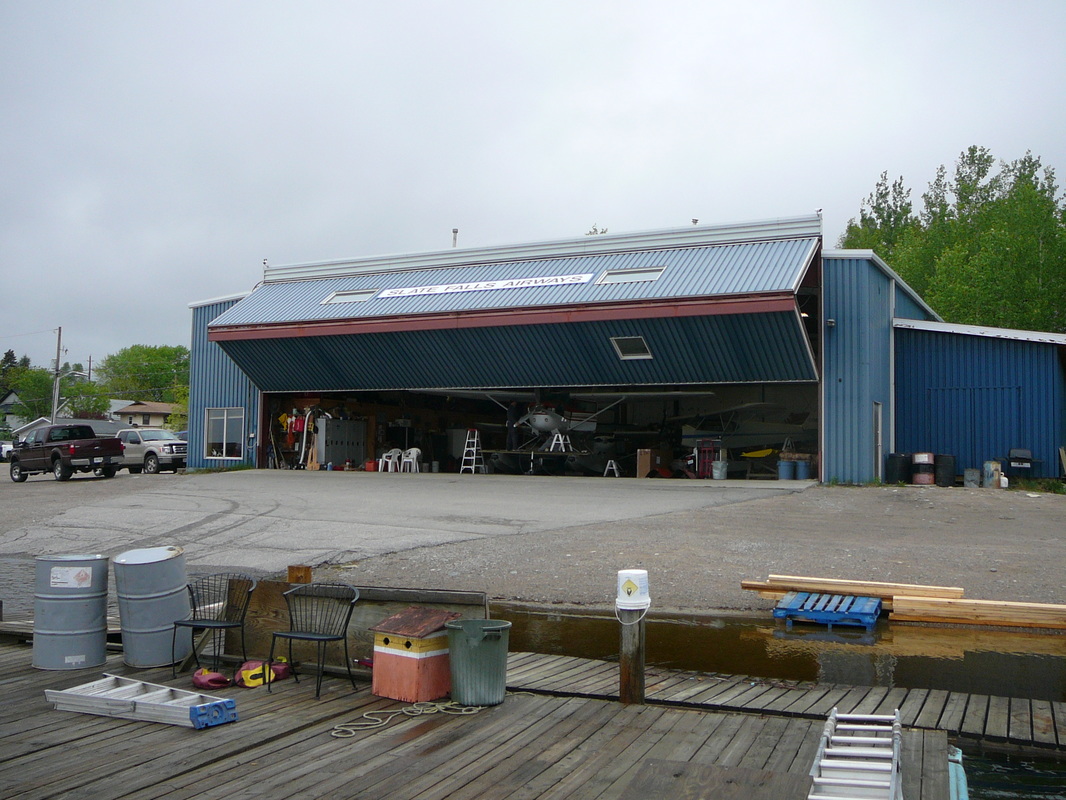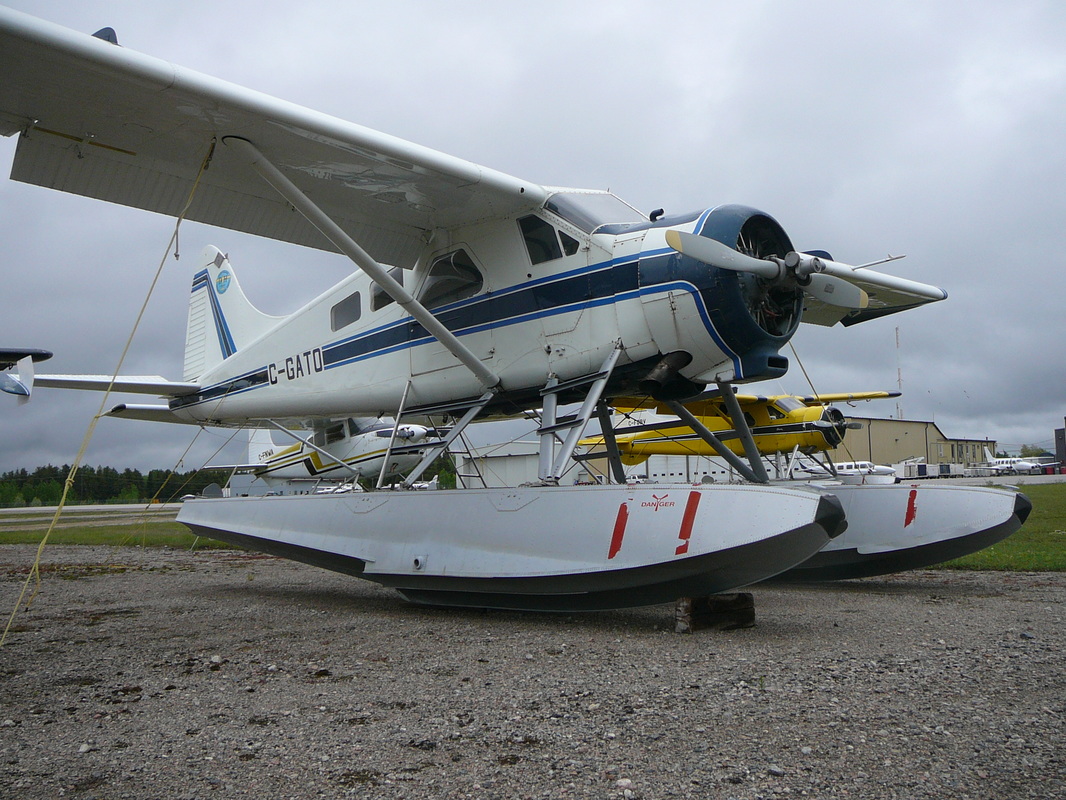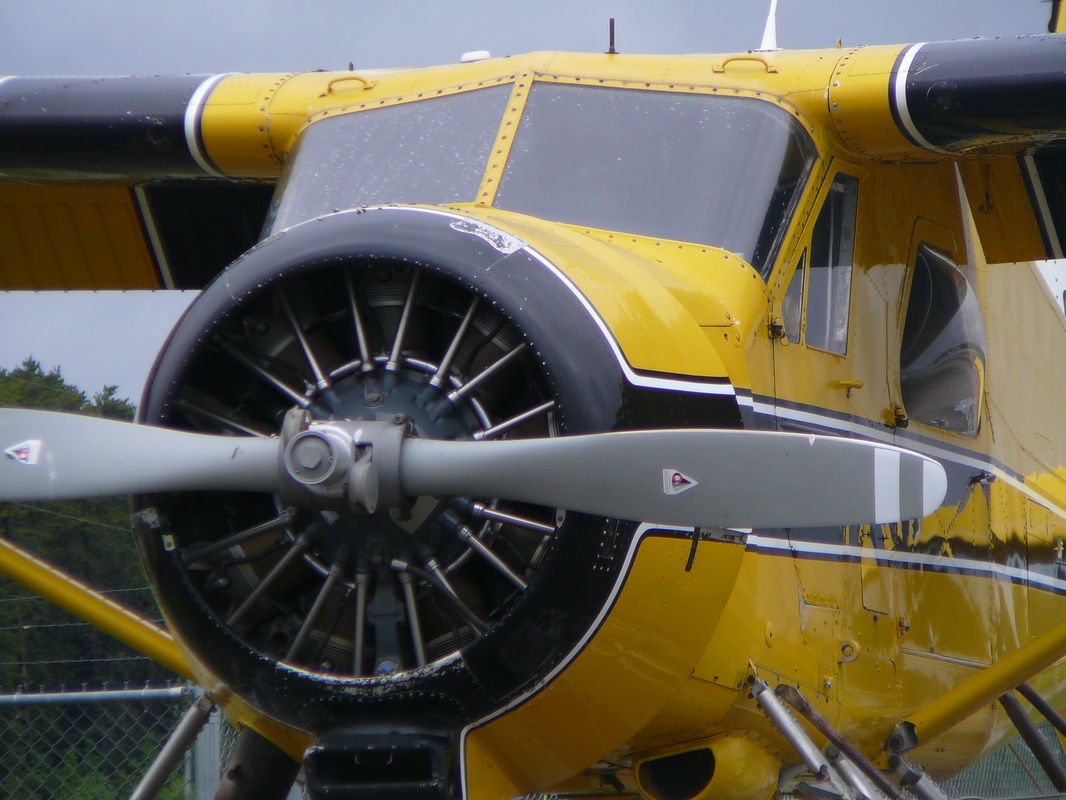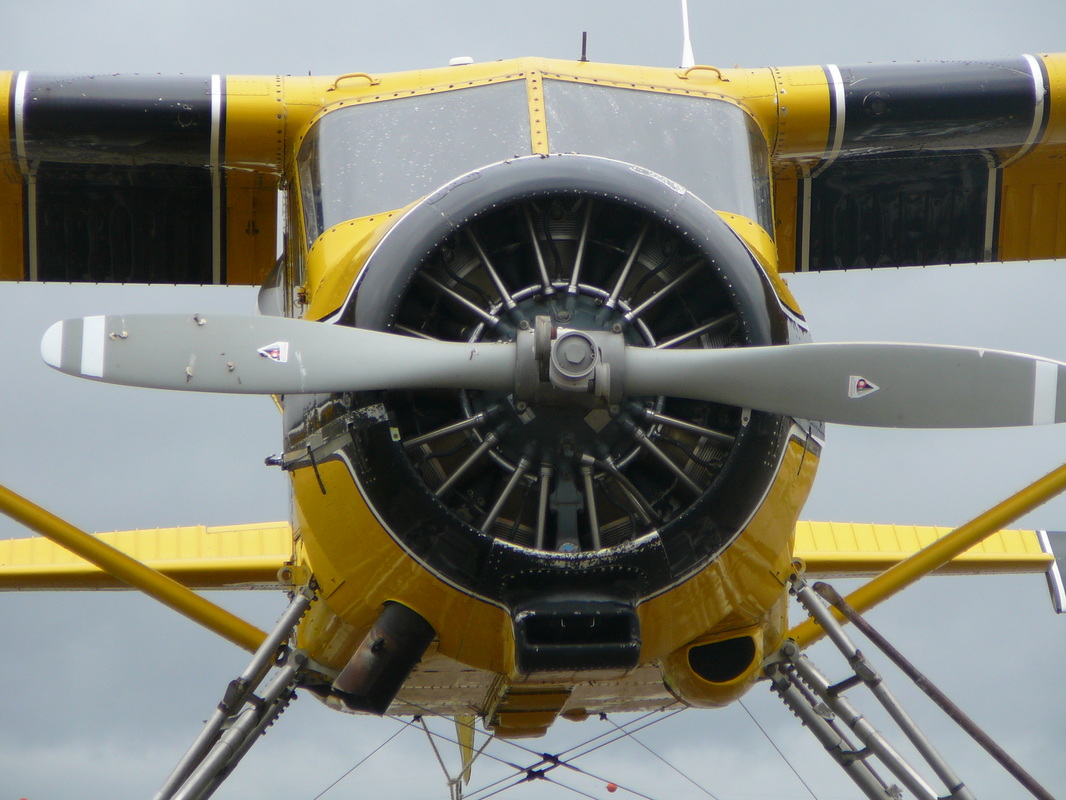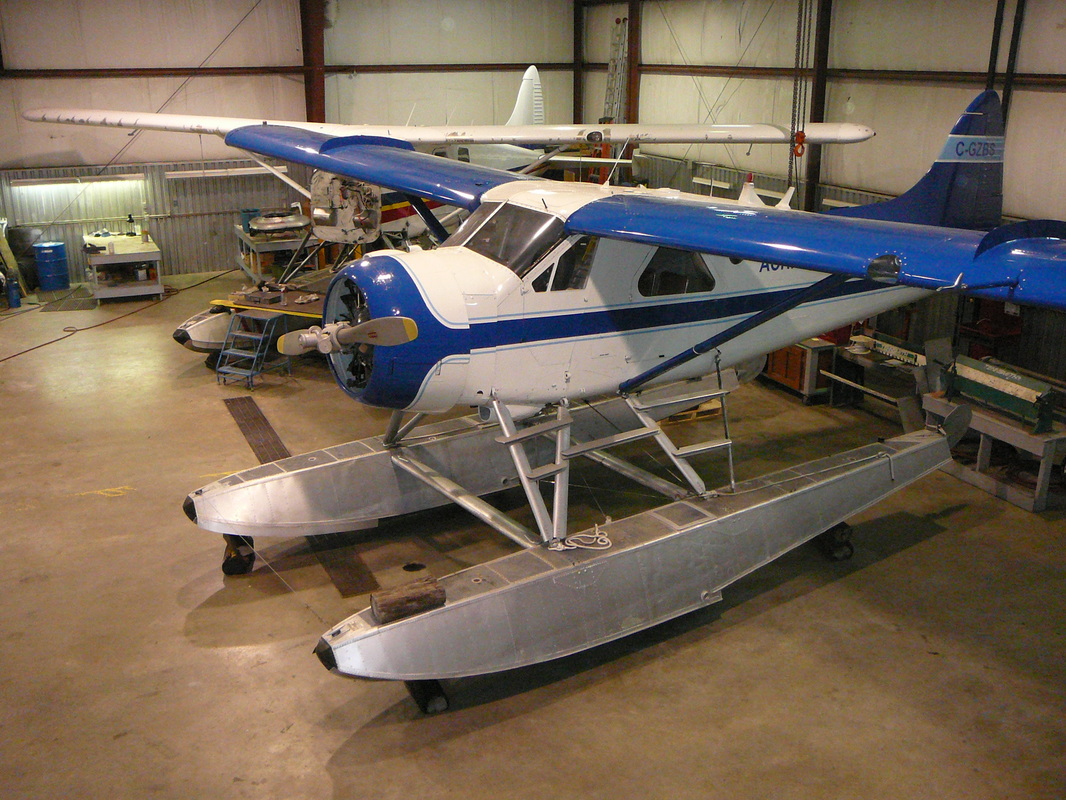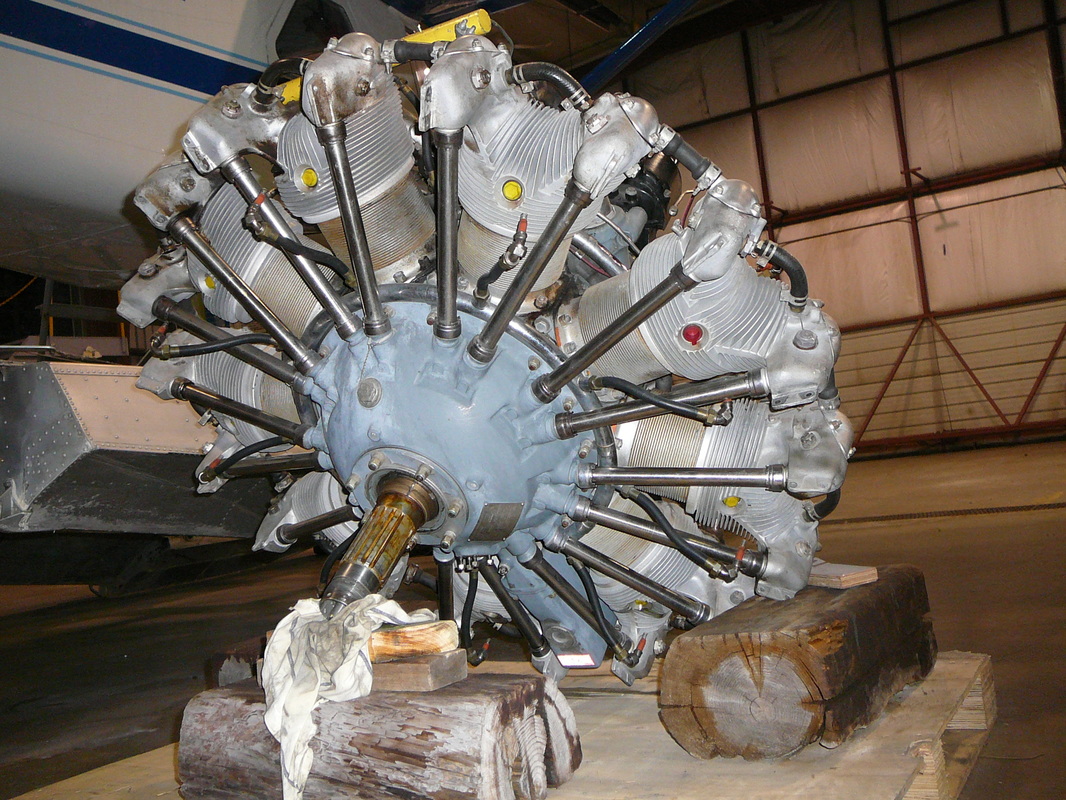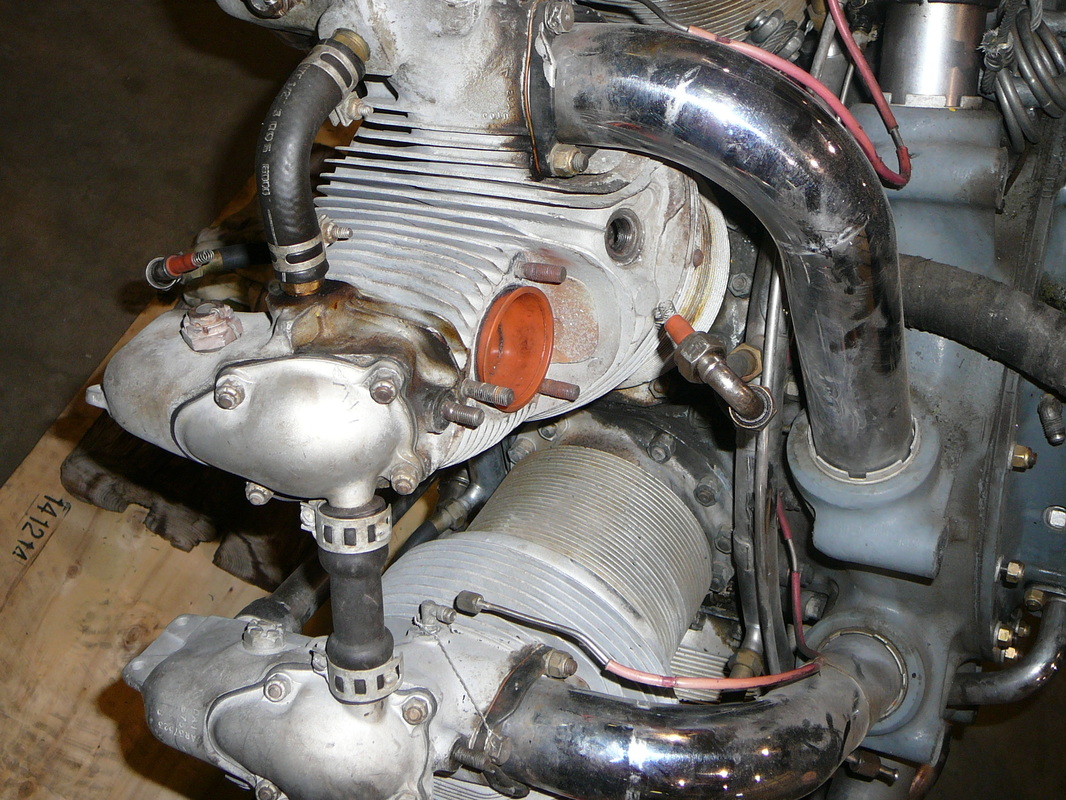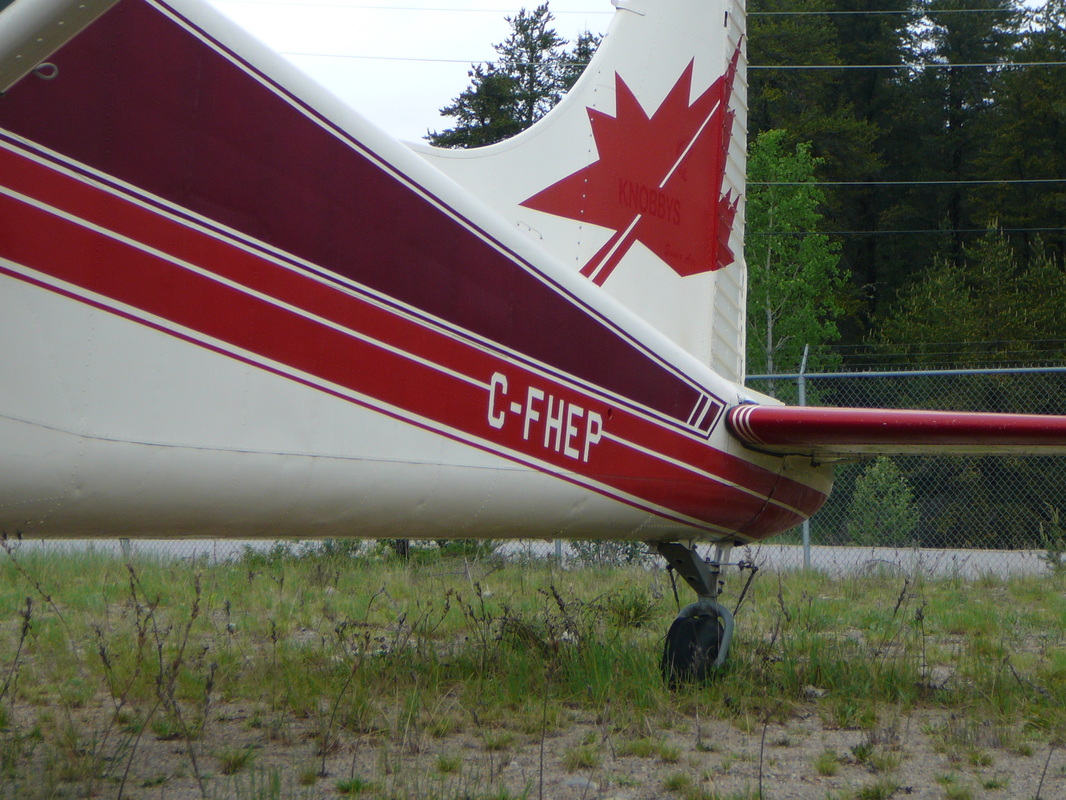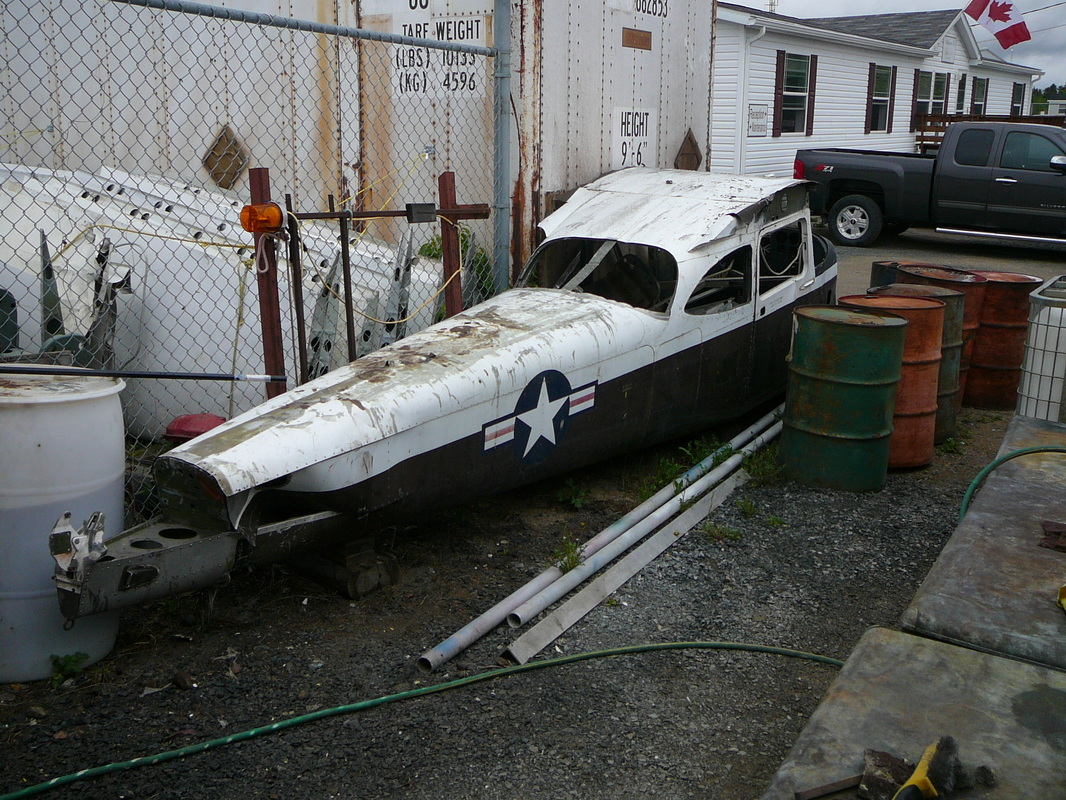Sioux Lookout
|
Sioux Lookout Sioux Lookout is a small town 370 kilometers from Thunder Bay on Highway 72, in Northwestern Ontario. It has a population of about 5,000 people and an elevation of 390 meters (1,280 ft) and is locally known as the "Hub of the North". A 1949 Republic Av. RC-3 Seabee (CF-SFG cn.919) is displayed as a roadside attraction in front of a restaurant/hotel just before you enter the town There are a number of fishing camps in the area that allow access to an extensive lake system fed by the English River. During the summer months, Sioux Lookout's population rises as tourists, most of which are American, arrive to take advantage of the multitude of lakes and rivers in the area. Experienced guides, employed by the camps, can locate the best locations and also provide an educated tour of the unique land known affectionately as "sunset country". The legend claims that late in 1700’s a decisive battle was fought at Pelican Lake between Ojibway and Sioux Indians and that the Ojibway used the high peak of land above Pelican Lake as a lookout for the invading Sioux in their speedy canoes. In the great slaughter that followed, the invading Sioux were killed or drowned. Slate Falls Airways
When arriving at Sioux Lookout town, immediately Big orange floatplanes are clearly visible on Pelican Lake! Slate Falls operates a fleet of five aircraft equipped with floats in the summer and wheels, wheel-skis or tundra gear in the winter. Their current fleet includes two Cessna 206 Stationairs, one De Havilland DHC-2 Beaver and two De Havilland DHC-3T Turbo Otters. It all started with a pair of PA-18 Super Cubs Slate Falls Airways started life as Slate Falls Trading Company in 1955. Until the 1960’s they transported furs and fish form the North with two Super Cubs. In time, they began evolving into tourist flying throughout the North. Their fur-and fish operations were based at the community of Slate Falls, Ontario, about 100 kilometers north of Sioux Lookout. In the 1960’s they moved their operations to Sioux Lookout. During the years Slate Falls has operated DC-3’s, SeaBees, Twin Otters, Beech Queen Airs and of course Beech 18’s. They even operated a Piper Aztec on floats! The company is also has an Approved Maintenance Organization. Their technical staff are the brains behind the maintenance operation and do a great job keeping their shiny orange fleet of airplanes in top shape all year round. Their hangar in Sioux Lookout is located right at the floatplane base, allowing easy maintenance. During our visit the following floatplanes were present at SFA dock: C-FDIN DHC-2 Slate Falls Airways C-FCZP DHC-3T Slate Falls Airways C-FNWX DHC-3T Slate Falls Airways C-GGHW Cessna 206G Slate Falls Airways C-GGPU Cessna 206G Slate Falls Airways C-GVIG Cessna 150H private C-FLNI Aeronca 11BC private C-FMBQ Piper J3C private (build 1947) C-FBJE Zenair Zenith Stol private C-GGPY Cessna A188B private C-FANI Piper 34-200T private |
|
|
C-FDIN
C-FDIN, operated by Slate Falls Airways, was photographed in a misty rain, adding shine to the immaculate orange paint. ‘India-November’ sits on top of EDO 4580 floats and has various modifications such as bubble windows,Kenmore seaplane fins and Kenmore steps. After 63 years, this Beaver is still flying strong and since August 1999, she is part of the pristine Slate Falls Airways fleet at Pelican Lake. C-FDIN was manufactured in 1960 and served for operators such as; Lac Seul Airways and Kuby’s Aircraft Ltd. before being sold to Slate Fall Airways in 1999. |
|
C-FCZP
DHC-3 Otter C-FCZP spent many years in the Northwest Territories with Canadian Pacific Airlines and several other bush plane operators. Slate Falls added it to their fleet in 2007 after a complete rebuild and a Vazar engine conversion by Lakeland Aviation of Fort Frances, Ontario. C-FNWX The Otter was constructed in 1962, but was retained by De Havilland as a demonstrator, registered CF-NWX. It flew for De Havilland for many years. When it was no longer required as a demonstrator, it remained in use as a test aircraft and also as a company transport. The Otter was eventually sold in November 1978. First it served Timmins Airways, then Ignace Airways Ltd of Ignace. It continued to fly for Ignace Airways until a crash at McKenzie Lake, Ontario in October 1987. The purpose of the flight on that day was for the captain to check out the co-pilot on the float equipped Otter. The aircraft, with the two pilots, one passenger and a cargo of sawdust on board, was near the maximum take-off weight. It took off for a VFR flight to nearby South Smoothrock Lake. The take-off run and lift off appeared normal. The pilot selected climb flap, reduced engine power and turned to fly along a valley leading away from the lake. The aircraft was at an altitude of 75 to 100 feet and approaching trees near the edge of the lake when it began to lose altitude. The captain applied power but this did not arrest the descent and the aircraft struck the trees and crashed one quarter of a mile from the shoreline. An accumulation of hoar frost on the wing surfaces and downdrafts common in the area led to the aircraft's descent into the trees. The Otter was taken to Kuby's Aircraft at Kenora, Ontario for a slow rebuild and in May 1992 was registered to Slate Falls Airways and it continued to serve the Ontario bush country from its base at Sioux Lookout. On October 18, 2004 C-FNWX arrived at Fort Frances, Ontario where it underwent conversion over the winter of 2004/05 to a Vazar turbine Otter. The conversion work was performed by Lakeland Aviation. |
|
|
|
|
|
Knobb’s
Knobby’s Fly-In Lodge and Outposts welcomes you to Paradise! Knobby’s has been serving fishermen for over 30 years. Not only do they have terrific walleye and northern fishing and deluxe cabins, but they offer their clients exceptional service. The men and women of Knobby’s say; - “Come and enjoy our hospitality in our beautiful northern wilderness. You may see moose, woodland caribou, bald eagles, loons and many other types of wildlife. The famous “Northern Lights” may dance across the night sky for you”. C-FKAC Found Bushmark FBA-2C1 Found Brothers FBA-2C1 C-FKAC , registered to Bamaji Air in June 2004. It is quite a unique aircraft. Note the lack of wing struts, unique to the Found with its cantilevered wing design. In 1946, Found Brothers Aviation Ltd. was established to design and build the FBA-1 aircraft, based on experience gained from bush operations in northern Canada, around the Mackenzie River to the Arctic coast. It was designed to operate on wheels, skis and floats and to withstand the rugged environment of the undeveloped regions of North America's bush country. The Found FBA-2 was an all-metal development of the company's first design, the Found FBA-1. The prototype first flew on 11 August 1960. It was a high-wing monoplane with a fixed tricycle undercarriage. The production version was to be the Found FBA-2B but the aircraft was produced with a conventional tail-wheel landing gear as the Found FBA-2C. The first production FBA-2C first flew on 9 May 1962. It was powered by an Avco Lycoming O-540-A1D engine and had a slightly longer cabin and enlarged cabin doors than the prototype. Originally, float or ski landing gear was available through third parties, and later became a factory option. Production ended in 1965 to concentrate on building the newer and largerCentennial 100. Thirty-four had been built. In 1996 the design was acquired by Found Aircraft Development who developed an improved model the FBA-2C2 Bush Hawk-XP. This version was manufactured between 2000-2007, after which it was replaced by a new version of the same basic airframe designated the Expedition E350. Bamaji Air Bamaji Air's floatplane base is located at the main gateway road into Sioux Lookout Ontario. Their air service is an Aboriginal business partnership between the Wasaya Group Inc. and the Slate Falls First Nation. From Bamaji's main base, vacationers are transported by floatplanes into their desired remote fishing and hunting camps north of Sioux Lookout. The air service offers year round service. Floats in summer, wheels & skis in winter. Bamaji Air Inc. operates 4 aircraft; a Caravan, a Cessna 185, a Beaver and a Found Bush Hawk. C-GIPR Cessna 208 Bamaji Air |

The Edo Aircraft Corporation
The Edo Aircraft Corporation began operations on October 16, 1925. Although EDO's founder, Earl Dodge Osborn, had dreamed of building airplanes, his first successful product line was EDO floats. Because of a new innovative design, the use of aluminum rather than wood and the simple fact that good runways were hard to find in the 1920s, demand built quickly for the floats. With the outbreak of World War II, the company's focus shifted and EDO began to provide subassemblies for military aircraft. This shift in emphasis led to the company being renamed the EDO Corporation in November 1947
|
Northern Airborne Maintenance
|
Northern Airborne Maintenance
C-GOQF Cessna 206 West Caribou Air CF-FOX Norseman West Caribou Air C-FGUE Beech 18 C-FOCV DHC-2 C-GATO DHC-2 C-FOBV DHC-2 Noorduyn Norseman CF-FOX was constructed for the USAAF in February, 1944. After the war it served in a number of civilian roles mainly Canada and was registered CF-FOX. During the ‘80s and ‘90s she changed hands many times. We saw her here at Sioux Lookout where she seemed parked, next to the company’s Cessna 206.
|
|
|
Beech 18 C-FGUE belonged to L&M Fly-In Outposts. Larry & Mary Adams owned outpost cabins on lakes out in the bush. In 2019 the Beech was owned by Gateway North Outfitters. ‘Screaming Beech’ Uniform-Echo, was delivered to the USAAF in 1945. She has the two-piece windshield and 3-Bladed Hartzells props.
|
|
|
Armstrong Outposts & Air Service DHC-2 Beaver C-FOCV has no visible modifications, other than the bubble window in the cargo door. As a civilian version, this Beaver has lower air induction, the original-style ventral fin and no porthole window aft of the cargo door- typical of the early build. ‘Charlie-Victor’ is sitting on EDO 4580 floats. This aircraft left the Downsview factory in 1950 for delivery to the Department of Land & Forest. She changed hands many times and finally became part of the Armstrong Outposts & Air Service fleet in 1999. The word spread that this real original classic could be yours for just $220.000,-!
Despite being a military version, this Beaver always had lower air induction. Other external modifications are; the extended cabin, EDO 4580 floats, Kenmore seaplane fins, two rectangular windows on each side, Kenmore steps, bubble windows, wing fences and drooped wings tips. C-GATO, was manufactured in 1952 and delivered new to US Air Force. Its civilian career started in the US in 1971. She crashed on the Black River. South of Dexter, New York, after two missed approaches, fuel exhaustion caused aircraft to crash into icy ground in whiteout conditions in a nose down, left wing low, attitude on February 08, 1975. The Aircraft was removed from the ice in parts and sold as salvage. In the following years she was totally rebuilt to flying condition. ‘Tango-Oscar’ came back to Canada in 1981 and worked with for an operator in Quebec and for Pickerel Arm Camps of Sioux Lookout since 2005. The lower air induction system consists of an air scoop in the lower engine cowling feeding unfiltered air through a duct and into the carburetor. On special order, this system can be equipped with a hinged, dry air filter mechanically connected to a carburetor air filter control installed above and to the right of the engine controls quadrant. This Beaver has an Hamilton standard 2D30-237 prop. overhauled by Propworks, is sitting on EDO 4930 floats, has a Baron Stol kit, a Sealand Alaska door and Kenmore sea fins. When checking the net I found her for sale by Lauriault Aviation for CAD 345.000,-. Her total time since new is 9629 hours. Sister ship C-FOBV is even older then ‘Charlie-Victor’, with construction number 5 this basic Beaver was built by de Havilland 65 years ago in 1948. Armstrong Outposts purchased the plane just recently in 2011. Both Beavers were many years part of the Ignace Airways fleet and both are still wearing the smart colors of that company. Note; - Both Beavers are of only a few remaining early-production examples without the porthole window. The lower air induction system consists of an air scoop in the lower engine cowling (later the air scoop could be replaced on-top of the cowling) feeding unfiltered air through a duct and into the carburetor. This system can be equipped with a hinged, dry air filter mechanically connected to a carburetor air filter control installed above and to the right of the engine controls quadrant. The control is marked CARB AIR, IN-RAM, OUT-FILTER and arrowed counterclockwise with TURN TO UNLOCK. At the RAM position the filter lies flush with the bottom of the air scoop and allows unfiltered ram air to enter the carburetor. At the FILTER position, the forward end of the filter is raised so that air entering the scoop must pass through the filter before entering the carburetor. The control must be turned clockwise to lock in either position. Under no circumstance must the CARB AIR control remain in any intermediate position between IN-RAM and OUT-FILTER. In and intermediate position the filter will cause a blockage in the induction system. The effect of the filter is to reduce the 5,000 foot critical altitude by approximately 800 feet. Below this new critical altitude there is no loss in engine power, while above this altitude the power loss is small. The engine may be started with the CARB AIR control in the RAM position to avoid damage in the filter in case of back-fires. Immediately after starting the engine, in areas wherever there is a possibility of dust, sand or dirt entering the intake, the control should be moved to and remain at FILTER position for all ground running, taxiing and take-off, and during flight if necessary. Take-off from a short field, at or above the new critical altitude, should be made with the CARB AIR control at RAM position, Before landing in dusty or sandy areas, the control must be selected to FILTER and remain in this position while the aircraft is on the ground, except when starting the engine as previously explained. |
|
|
|
|
Red Hawk maintenance
|
The aircraft is powered by a Pratt & Whitney ‘Wasp Junior’ model R-985SB3 nine-cylinder single-row radial engine, rated at 400 BHP at 5,000 ft altitude. The engine drives a Hamilton-Standard constant-speed propeller; crankshaft and propeller rotation being clockwise. Propeller diameter measures 8 ft. 6 in. The supercharger is an engine-driven single-stage centrifugal type. The engine drives a Hamilton-Standard two-bladed 8 ft. 6 inches diameter constant speed, counterweight type propeller having a pitch range for 11.5 to 24 degrees. The propeller lever in the engine controls quadrant on the top of the pedestal and sled in a gate marked RPM, DECREASE and INCREASE. It is connected by a push/pull rod linkage to the propeller governor. The governor retains the selected rpm constantly, within the operating range of the propeller, regardless of variations in air loads of flight attitudes. When INCREASE RPM is selected the governor directs oil from its own engine driven pump to the propeller, at pressure, which hydraulically moves the propeller blade, in opposition to the counterweight, to lower angels. When DECREASE RPM is selected the governor allows oil from the propeller to return to the engine sump and the counterweights mover the blade to higher angles. The oil tank is located aft of the fire-wall and is serviced from inside the cockpit through a filler at the base of the pedestal. The capacity is 5 ¼ imperial gallons. Red Hawk
C-FHEP DHC-2 Knobb’s C-GZBS DHC-2 Achigo Air C-GDYD DHC-2 C-GZBS, came off the production line in 1956 for delivery to the U.S. Army. After spending part of its lifetime in the Army she was stored during the mid seventies, at the storage facility of the USAF at Davis Monthan. She came back to Canada in 1978 and served many Canadian bush plane operators well. Despite the Achigo Air Ltd. Titles, the present owner of this Beaver seems to be Bamaji Air Inc. of Sioux Lookout. ‘Bravo-Zulu’ has been equipped with Baron STOL components; drooped wing tips, wing fences and contoured leading edge of the wing. C-GDYD, came off the production line in 1961 for delivery to the Ghana Air Force. Spending part of its lifetime in Africa ‘Yankee-Delta’ returned to Canada and operated a couple of years for Wasaya Air. In April 2009 she was registered to Bamaji Air Inc. of Sioux Lookout but still remained the colorful cheat line of her former operator Wasaya Air. |
|
|
C-FHEP This early production Beaver left the Downsview factory in 1950 for delivery to Imperial Oil Ltd. After logging many hours for Imperial Oil she was sold and finally ended up with Knobby’s. Presently ‘Echo-Papa’ seems stored outside next to the Red Hawk hangar but on closer inspection we found a brand new R-985 installed! We expect ‘Echo-Papa’ back in the air soon. |
|
|
Allen Airways Ltd.
|
Allen Airways Ltd.
The men of Allen Airways Ltd., located at Sioux Lookout airport are restoring and repairing Beavers more than 50 years. C-GDXW DHC-2 wreck C-GDZC DHC-2 wing only CF-GQU DHC-2 wing only C-GDXW Close-up view of C-GDXW showing her main firewall on forward fuselage. Build in 1952, this former US Army De Havilland L-20A Beaver found its way to civilian registry as C-GDXW. ‘Xray-Whiskey’ is registered since 1976 to Robert and Mildred Smith of Armstrong, Ontario. She has been stored with Allen Airways at Sioux Lookout for many years but we could still vaguely discern the registration C-GDXW. Note the unique wheel-gear suspension with its replaceable rubber cushions. |
|
Wings only!
Wings only! C-GDZC, of which we only found its wings, was build in 1952 for U.S. Army. This Beaver was one of the many which were stored during the mid seventies, at the storage facility of the USAF at Davis Monthan. She came back to Canada in 1976 and changed hands many times before she crashed during take off from Hawk Lake, Ontario, on June 05, 1988. The remnants were stored at the compound of Allen Airways. Note, the yellow colors of the wings are of her time with Austin Airways. Pieces of Beaver wings! Pieces of Beaver wings! CF-GQU was build in 1951 and twenty years later (Oct. 30, 1971) she was written off while taking off at Bamaji Lake north of Sioux Lookout. It was suspected a possible ice build up on takeoff or low clouds with freezing rain caused the accident. The pilot and five passengers were killed in the crash. The aircraft ended up submerged in the lake. It was salvaged and its remnants finally showed up at Allen Airways scrap yard. During our visit we could only located the wings of CF-GQU. |

